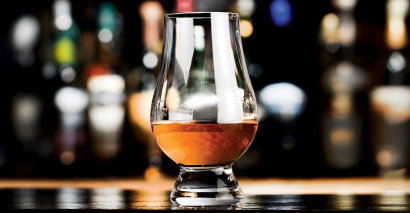
GETTY IMAGES
Most Americans probably had their first bowl of truly authentic ramen without even knowing it. Those famously cheap bricks of dried noodles we rehydrated in our college dorm room are technically ramen, but bear little resemblance to the steaming, sumptuous bowls of noodles and broth served at top restaurants these days. While integral to Japanese culinary culture today, ramen is actually of Chinese origin, and made its way to Japan sometime between the 17th and 19th centuries, according to ramen historian George Solt. More important, says Solt, is the year 1910, when Tokyo restaurant Rai- Rai Ken first opened its doors and made fresh shina soba—Chinese noodles—widely popular.
And that is where ramen truly shines, in its freshly made form, with chewy noodles and a broth that has simmered for hours, sometimes as long as a day. Such ramen traditionally appears in one of four forms, each denoted by its type of broth: shoyu, flavored with soy sauce and usually made from chicken; shio, a more delicate broth, also typically chicken-based, but seasoned with salt; miso, a heartier broth flavored with miso, fermented soybean paste; and tonkotsu, a rich creamy broth made from long-simmered pork bones.
As important as the noodles and toppings are to the quality of a bowl of ramen, the key for successful drinks partnering is the broth. Before addressing whisky pairings, however, let us talk temperature. There are those drinks experts who adamantly oppose the partnering of a hot liquid with a cold beverage. While this general position is debatable, in the case of ramen, which is often defined by its sultry, soulful steaminess, it is an adage worth following. So ice or Highballs are not a great fit.
Of the broths, the lightest is shio, so it’s unsurprising that its best partner is a lighter whisky, such as a low-rye Canadian or a gentle Japanese or Irish blend. Do note that, even when not as pronounced, shio ramen’s salt content does make it a bit thirst-inducing, so a glass of room-temperature water on the side is recommended.
Of medium weight but maximum richness is tonkotsu, which for that reason also seems the most indulgent ramen broth. This one calls for a scotch single malt, with its complexity playing off that of the dish. But beware of peaty or sherried accents, as they can clash with the comforting nature of the ramen—although a slight maritime character does serve the partnership well.
I tried pairing the bigger flavors of straight bourbon and rye with shoyu, but the combination of soy and spirit failed every time. Much better was the contrast of a blended whisky, either light in character or medium-bodied, such as Famous Grouse, cut with a bit of room temperature water for enhanced refreshment.
Finally, the only situation that lent itself to peatiness was the earthy character of miso ramen. Even so, the intensity and weight of a smoky single malt seemed a bit out of place, with a moderately peated blended scotch filling the partnership role much more ably.
Savor Ramen With These Whisky Pairings
_300.jpg)
Shio & Bushmills Original, water on the side: The whiskey complements the savory nature of the broth, while water refreshes the palate between sips and slurps._300.jpg)
Tonkotsu & Old Pulteney 12 year old: The freshness of and suggestion of salt in the whisky accents rather than combats the richness of the ramen, creating a delicious combination.
Miso & Johnnie Walker Black Label: The moderate peatiness of the whisky provides the perfect counterpart and complement to the earthiness of the miso.



![A Look Back at the Last 25 Years of Whisky [Part III: 2020-2025]](/get/files/image/galleries/25_years_part_3_hero.png?resize=410x0)
![A Look Back at the Last 25 Years of Whisky [Part 2: 2010-2019]](/get/files/image/galleries/25_years_part_2_hero.png?resize=410x0)